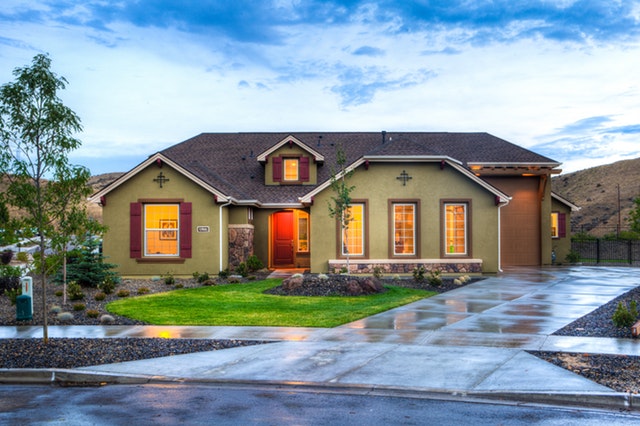Inexpensive Curb Appeal Tips That Work
 No doubt you’ve been told that curb appeal will help sell your home. But if money is short you’ll need to do some curb appeal on a budget tricks.
No doubt you’ve been told that curb appeal will help sell your home. But if money is short you’ll need to do some curb appeal on a budget tricks.
Following are some inexpensive curb appeal tips that really work.
Fresh Coat Of Paint
A fresh coat of paint adds curb appeal without busting the budget. With a gallon of paint you can freshen up the window ledges, shutters, front door and the garage door. Add a fresh coat of paint to decks and railings, and street lampposts, as well.
Solar Lighting
You can find inexpensive solar lighting stakes at discount stores around the country. Add these to the edges of the driveway, along the front pathway and around front hedges for nighttime curb appeal.
Metallic Paint
If you can’t afford brand new hardware for your front door, consider investing in a small tub of metallic paint. Refinish the doorknob, door knocker and the metal porch light fixtures.
Annuals
Landscaping can be pricey, but with a couple dozen inexpensive blooming annuals you can transform your front walkway. Choose the most colorful annuals you can find at your local discount store. Plant right alongside the path leading to your front door. Fill in empty spaces in between plants with colored mulch.
Wreath
Simply hanging an attractive wreath on your front door adds a tremendous amount of curb appeal that can be seen all the way from the road. To avoid marring the wood, use a wreath hanger that installs over the top rim of the door.
New House Numbers
Pick up a set of brand new house numbers from your local hardware store. Hang them front and center next to your mailbox on your porch, on your mailbox post or over your garage door.
Refreshed Mailbox
Mailboxes get ignored so many times. It’s a shame because it’s easy to add curb appeal with an inexpensive magnetic mailbox cover. If you have a different kind of mailbox, consider just giving it a fresh coat of spray paint.
Bird House
Another inexpensive way to add curb appeal is with a decorative bird house or similar lawn ornament next to your front porch. These are on long stakes that you simply push into the ground. Tick one into your hedges for a charming look.
You can complete these inexpensive curb appeal tips with a minimum of time and money. Yet, they’ll have a similar impact as if you spent hundreds of dollars.
If you are interested in purchasing a new home or refinancing your current property, be sure to contact your trusted home mortgage professional.

 When you started thinking about putting your house up for sale, you probably made a list of repairs that need to be done ahead of time. If that list was long, you might be at a point where you’re asking if it’s all worth it. Will prospective buyers really notice the little things? And even if they do, will that affect how much you’re able to get for your home?
When you started thinking about putting your house up for sale, you probably made a list of repairs that need to be done ahead of time. If that list was long, you might be at a point where you’re asking if it’s all worth it. Will prospective buyers really notice the little things? And even if they do, will that affect how much you’re able to get for your home? Renovations that create a multi-use property or the development of a new multi-use project can be a very attractive investment especially in urban areas that are undergoing redevelopment. The concept of multi-use is to make the most of the site that is revitalized or developed.
Renovations that create a multi-use property or the development of a new multi-use project can be a very attractive investment especially in urban areas that are undergoing redevelopment. The concept of multi-use is to make the most of the site that is revitalized or developed.